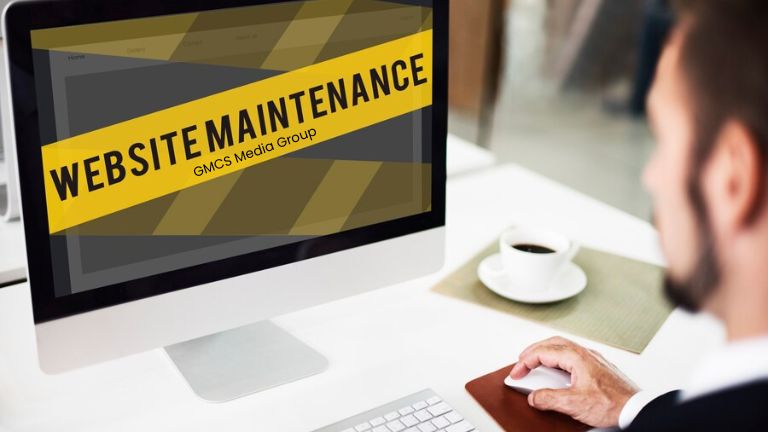How to Choose the Right Website Maintenance Service for Your Business
As we live in a digital age, your website is the most likely place where people get their first impression about you and what information they can expect from your business. It represents your brand as an online showroom or a 24/7 customer service representative. So it is essential for a high volume of traffic to your website and an annual revenue stream above one million lines, which means that the performance of your site should be maintained exceptionally well. Website maintenance services maintain your site, update it, and keep its performance smooth as an object. But, how would you select the appropriate web maintenance service for your business? This will help you make the most well-informed decision possible. Understand Your Website Needs Before choosing a company for website maintenance, you should analyze what your needs are. Are you looking for regular updates, plugin management, or more technical support like security and backup monitoring? From what I have noticed, there are businesses that need basic maintenance and others require more complicated technical supports (or if they use e-commerce). Key Points to Consider: Do you have a website that has lots of content and is frequently updated? Does your app require continuous security monitoring or is it bug fixing on demand? Do you have any third-party tools or platforms that your website needs to be connected with? Assess the Breadth of Services Type of services offered by companies under website maintenance. We have compiled a list of elements that you should expect from such a comprehensive website maintenance service provider: Security Monitoring: Scans and updates to secure the site from malware hacks. Content management, plugins, and other website software updates to keep the site running optimally. Backup Services — Set your regular back of the data in case your website runs into trouble like a crash, or is hacked. Customer Service: Instant response for bugs, downtime, and other technical issues Regular updates: Simple content edits; Editing text, image, or product update Ensure the service you go with has a good blend of these services in accordance with what your business needs. Check for Customizable Plan Every business does not have an equal need for website maintenance. Like a simple blog will require maintenance less than an e-commerce site. Consider service providers that allow you to create your own plan that way, you can pay for just what you need and not be locked into pricier all-inclusive formats. Ask Yourself: Is the service pay-as-you-go, retainers and monthly or fix for one-time only? Will services scale with your business? Uptime Monitoring and Security One of the main factors to consider when choosing a website maintenance service is security. A trustworthy provider will give you continuous security audits, regularly scheduled vulnerability scans, and take corrective actions if any shortfalls are identified within a reasonable timeframe. For some businesses, downtime equals dollars, but what is not measurable in terms of money lost is the trust from clients or customers. So, you need uptime monitoring to detect and fix problems before they reach your users. Look For: 24/7 website monitoring SSL certificate renewal Contingency support for hacking attempts or data breaches Assess Response Times As the saying goes, time is money — and this applies particularly well to internet businesses. Your website going down can mean lost sales and customer dissatisfaction. So you need a maintenance service that can troubleshoot and resolve issues very quickly. Questions to ask: Do they offer 24/7 support? How fast do they respond to emergencies? How fast can they release updates and bug fixes? Get clarity on their mastery and guide_Check the Portfolio Your website is such a big investment, so you want to make sure that the team looking after it has the skills and experience necessary. If the answer to that is not yes, ask for references or a look at their portfolio. Be sure that the solution provider has successfully worked with your CMS (WordPress, Shopify, Joomla, etc.) and other technologies they use to power up your website. Checklist for Evaluation: Do they have experience in working with clients like you Have they got a strong history of enhancing the website to perform and be secure? Test the Pricing Structure The price matters when deciding on a website maintenance service. The cheapest option is not possibly the best one; after all, they could be saving costs at some trade-off in terms of making security or backups to your systems. Opt for transparent pricing without any hidden costs from the service provider. Check out the pricing plans and choose a plan that suits your business. Factors that Affect Pricing: Number of updates times Number changes needed How big and complicated your website is How often backups are performed and security scans Client Testimonial & Reviews Client testimonials are always an invaluable resource for understanding the nature of services. Look for online reviews or testimonials to find out how the experience of previous clients. This will help you gain a better idea of their service quality, turnaround time, and support. Conclusion Picking the best expert website model agency is important to cut your business on top in terms of its presence online secure as well up-to-date with. My site… Before procuring a hosting service, do check your requirements, the services they are offering, and how much flexible their plans can get you along with the security required. When done correctly, your website will do more than just run smoothly; it can only actually get better with time. GMCSCO Media Group – We provide additional functionalities — like regular updates or security monitoring… even on-the-spot troubleshooting. With over 10 years of experience, we offer top-notch website maintenance services at very reasonable prices to ensure your website runs smoothly without a hitch. Contact us today to hire us! Also Read About 6 Most Important SEO Factors for Travel Websites
How to Choose the Right Website Maintenance Service for Your Business Read More »






